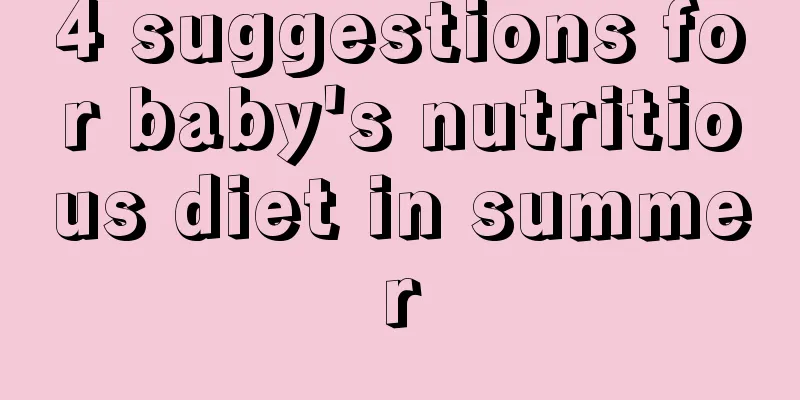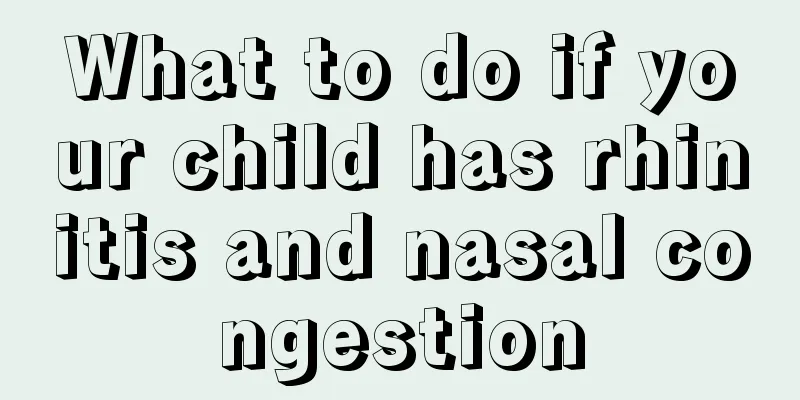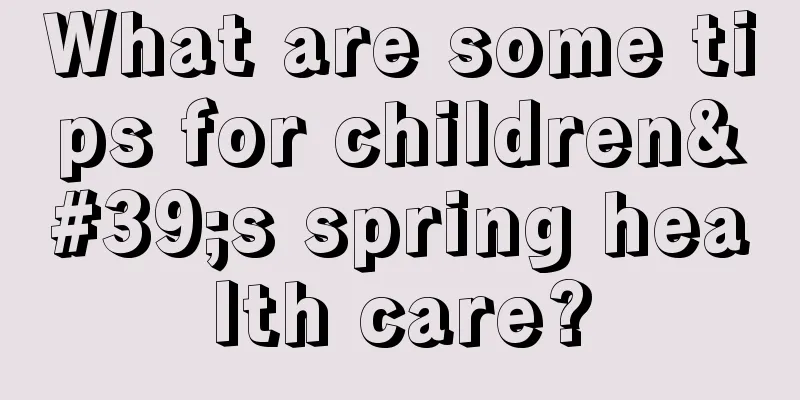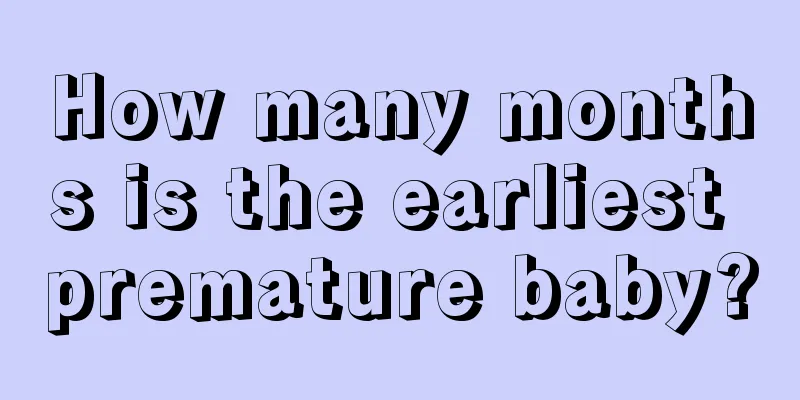Anti-inflammatory drugs for children's pneumonia?
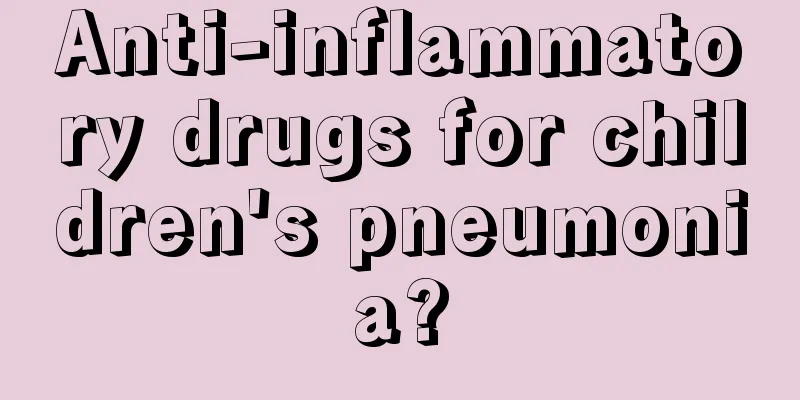
|
Pneumonia is a very common disease in children. Whether to take anti-inflammatory drugs for pneumonia depends on the condition. Pneumonia may be caused by bacterial infection or viral infection. Therefore, it is best to go to the hospital for a check-up on pneumonia. It is best to take anti-inflammatory drugs under the guidance of a doctor. Parents need to let their babies drink more water and give them more fresh vegetables and fruits. What are the symptoms of pneumonia in children Fever Children suffering from pneumonia usually have fever symptoms, with body temperature above 38°C, which lasts for two or three days. Antipyretics can only temporarily lower the body temperature for a while, but it will rise again soon. Although children may have fever when they have a cold, the temperature is mostly below 38°C and lasts for a short time, so the effect of antipyretics is more obvious. But at the same time, we should also be wary of pneumonia in children without fever. Babies with pneumonia may have a very high temperature, but they may also not have a fever, or even have a temperature lower than normal. The duration of fever cannot be used as a basis for diagnosing pneumonia. Some babies develop pneumonia after only two days of fever, while some babies do not develop pneumonia even after a week of fever. Therefore, fever alone cannot determine whether a child has pneumonia. It also requires a combination of other aspects to determine. Coughing and breathing To determine whether the child has pneumonia, we also need to see whether the child has cough, wheezing, and difficulty breathing. Coughing and wheezing caused by colds and bronchitis are mostly paroxysmal and generally do not cause difficulty breathing. If the cough and wheezing are severe, the respiratory rate increases when at rest (i.e., infants under 2 months old breathe ≥ 60 times/minute; infants 2-12 months old breathe ≥ 50 times/minute; children 1-5 years old breathe ≥ 40 times/minute), the nostrils on both sides open one after another, and the lips turn blue or purple, once the above symptoms appear, it indicates that the condition is serious and should not be delayed. More than 50% of the pathogens of viral pneumonia are respiratory syncytial virus, which accounts for one-third of all pediatric pneumonia hospitalizations. It often occurs in winter and spring. The most typical age of onset is 6 months to 3 years old. These children often develop an acute onset of illness, first with "cold" symptoms that last about 3 days, with a low fever (body temperature measured at around 38°C), clear runny nose, and cough. About 60% of the children may not have a fever. After 2-3 days, the cough worsens and the breathing becomes rapid and shallow, reaching 60-100 times per minute. The most prominent symptoms are wheezing, shortness of breath, and prolonged exhalation. The sound of wheezing sometimes does not require a stethoscope and can be heard as long as you get close to the child. The child is in great pain. Mental state In order to detect pneumonia in children in time, careful mothers should also pay attention to their children's mental state. If a child is in good spirits, playful and cheerful while having a fever, cough and wheezing, it indicates that the possibility of him having pneumonia is very small. On the contrary, if the child is in a poor mental state, has blue lips, is irritable, crying or drowsy, has convulsions, and a few children may even have delirium, it means that the child is more seriously ill and is more likely to have pneumonia. In the early stages of pneumonia, a child may not show any obvious changes in spirit, or may be in a poor mental state. Measures to prevent pneumonia To prevent pneumonia, you should focus on the following measures: 1. Strengthen care and physical exercise in daily life, develop good eating and hygiene habits, go outdoors more often, get more sun, ensure adequate sleep, and improve the body's resistance to disease. Open windows regularly to ventilate the room, pay attention to weather changes, and add or remove clothes for children in time. 2. Prevent respiratory infections and avoid contact with patients with respiratory infections as much as possible. When someone at home has a cold or cough, do not let them come into contact with your children. During the cold season, visit less often and avoid crowded public places. 3. Carry out immunization plans for children, especially timely vaccination of measles, diphtheria, pertussis and influenza vaccines to reduce the occurrence of secondary pneumonia. |
<<: What to do if your child has violent tendencies
Recommend
How can children eat to strengthen their physique?
I often hear mothers complain that their children...
What should I do if my child’s voice is always hoarse?
The throat is a key organ that we use to make sou...
What to do if your baby is suffering from internal heat and constipation? Some habits can improve it
Since the baby's digestive system is not yet ...
Baby viral cold fever
Viral colds are more common in winter. The dry en...
What is the reason why small red spots appear on children’s faces when they get hot?
Because living conditions are better now, almost ...
Best height increase pills
Some people are very dissatisfied with their heig...
How to supplement calcium for six-year-old children
As we all know, calcium is a very important eleme...
What to do if children have freckles on their faces
I believe everyone is familiar with the symptom o...
What are the symptoms of nasal polyps in children?
Nasal polyps can occur not only in adults, but al...
Baby's monthly growth
Understanding the growth and changes of the baby ...
What causes acne in children?
It is normal for adults to get acne because their...
Is newborn hearing screening accurate?
Generally speaking, newborn hearing screening is ...
What to do if your child pouts
Pouting eyes mostly occurs in adults, but what sh...
What should I do if my one-year-old child has phlegm in his throat?
We have all experienced phlegm in our throats. Ge...
Why do children's knees make cracking sounds? Causes of cracking knees
Children's knee joints may make parents worry...
